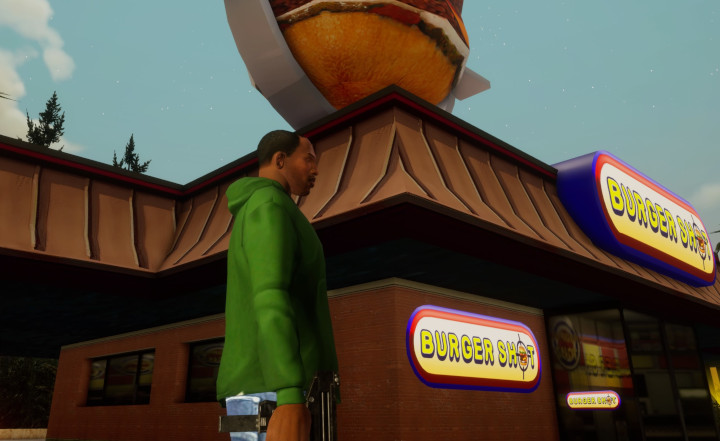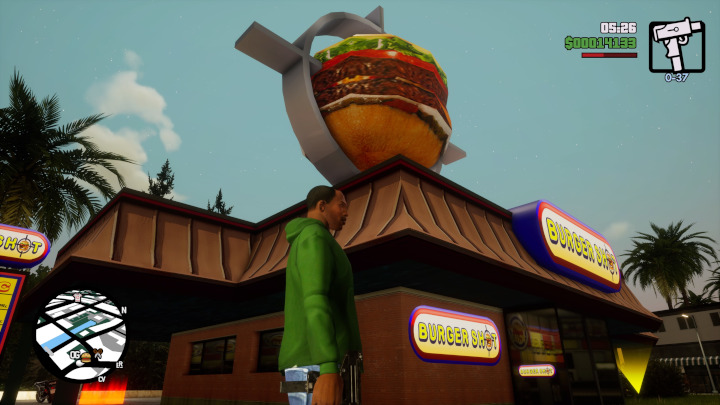
I still remember a good deal of my time spent with Grand Theft Auto III, Vice City, and San Andreas. My brother and I played through each title, but since they grew in scope with each subsequent entry, it was San Andreas that by far ate up most of our collective running time. This doesn’t come as a surprise, considering just how much was stuffed into what is now, in hindsight, a relatively lean package. In fact, in comparison to Rockstar’s modern-day offerings (GTAV and Red Dead Redemption 2), GTA III and Vice City seem rather quaint.
But even though the size of these games is dwarfed by the current competition, the amount of content that San Andreas offers still manages to blow a lot of current games out the water, in my humble opinion.
I have thus far only spent a handful of hours with each of the three games Rockstar packed into Grand Theft Auto: The Trilogy – The Definitive Edition, but I feel like I’ve seen a decent enough representation of what each has to offer. I was surprised to walk away with the feeling that, even though GTA III is technically the most limited of the three, it does still have its charm. It even has features that contemporary open-world games lack, such as a fully rideable train system — an option that was noticeably absent from the 2020 Mafia Definitive Edition. It’s odd to think that, by contrast, this lumbering old dog (which is a mere remaster) can still deliver a better cityscape simulation than a modern full-fledged remake. Admittedly, GTA Trilogy loses out when it comes to visuals and overall controls.
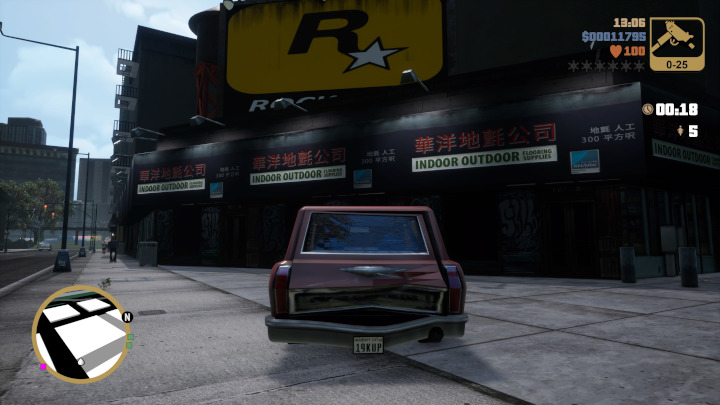
What I think stands out the most is just how antiquated the player’s abilities really are in GTA III. As Claude, the player is unable to jump more than about two feet off the ground, and he is completely incapable of climbing over even the shortest of obstacles. I also forgot that, when moving, your options are just a basic jogging speed, or toggling to a full-on sprint by mashing the run button. But even then, Claude is only capable of a full sprint for maybe what would be the in-game equivalent of one or two city blocks, depending on their lengths.
And even though the player interactions are limited — both with the game world but also with the quest givers — GTA III feels like a complete package within these limitations. It knows exactly what it is, delivering a mostly believable and well-rounded narrative.
When jumping ahead to Grand Theft Auto: Vice City, it is immediately apparent that Rockstar improved on mostly everything: more characters, including a fully voiced main character (Tommy, who is voiced by Ray Liotta), more vehicle types (including motorcycles, which were absent in GTA III), more clothing and weapon options, and even the ability to purchase assets like nightclubs and apartments.
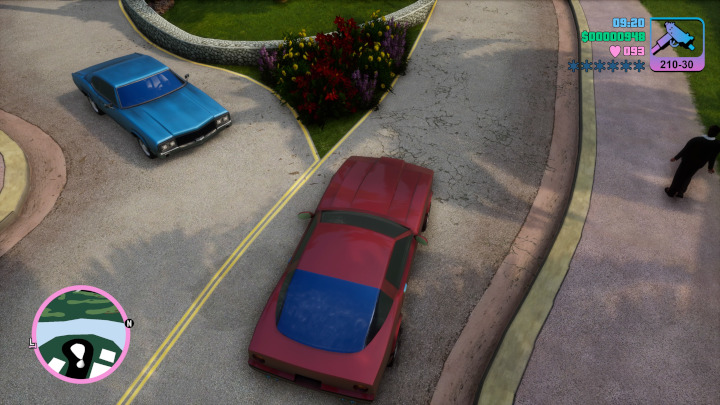
Even with these improvements, I can’t help but feel like it rests on its laurels a bit, really leaning into that “It’s the ’80s, wink wink,” low-hanging fruit, rather than offering a more nuanced commentary on the goings on in the country at the time — mostly the grimmer side of the drug culture, the widening poverty gap, or even the AIDS epidemic. But this is a tongue-in-cheek satire, so I should know better than to expect anything more than surface-level bear-poking.
For me, though, the crown jewel is Grand Theft Auto: San Andreas, a massive (for its time) grand opus. This game is absolutely jam-packed with content: things to see, stats to upgrade, and even people to date. It’s hard to even touch on every activity the player can engage in, and Rockstar’s design expertly doles out each new interaction, like peeling back the layers of an onion.
Starting out in Los Santos, there are gangs to bang within the newly introduced Turf War mechanic, and graffiti to paint over. You can grow muscle by visiting gyms or gain weight if you want by overeating — you can basically create whatever kind of Carl Johnson suits your tastes. All of this is to say nothing of the ’90s style, Boyz in the Hood-tinged narrative, which sees you doing a whole host of gang-related, family-strengthening activities. Even the vehicle-specific missions return from previous entries, like being a cab driver or fire fighter, and this time around you can even be a pimp, delivering call girls around the city, keeping them safe and busting up Johns that refuse to pay, which culminates in a perk where if you pick up a lady of the night, THEY pay YOU.
This is all before you even unlock the freedom to visit the other two fully fleshed-out cities in the San Andreas area, Los Venturas and San Fiero. It’s easy to get lost in the graphical leap to GTA IV and again for GTA V, but after spending time with this newly remastered San Andreas, I think it’s starting to reclimb the ranks of my favorite Grand Theft Auto game.
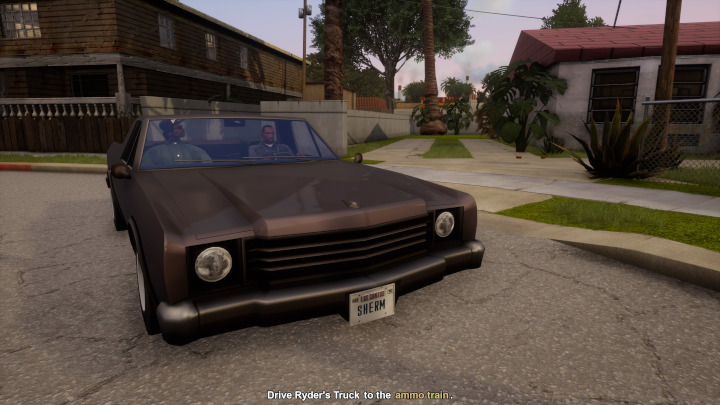
But that isn’t to say that this package is completely flawless, because it isn’t. Each title in this collection is marred by a number of bizarre character model “fixes” and a handful of technical issues. While playing GTA III, I noticed a weird glitch while driving by the high-rise housing tenement, where the ground textures would all of a sudden turn to a pinkish hue that would follow my FOV as I moved or rotated the camera, as if the sun’s rays were reflecting inaccurately. I only noticed it in one other area, and only in GTA III, but it was rather distracting. Some of the wheels also had a bizarre effect, the tread textures would seemingly vanish while looking at them at specific angles from close proximity, and the station wagon would leave a trail of streaming tire trails sometimes, and would also turn green intermittently.
There were also some curious character model choices across all three titles in this collection that I’m sure by now most people have seen in the multitude of Twitter posts and articles highlighting the more cosmetic issues with each game. And then, of course, is the distracting and even simulation-breaking milky rain, which creates a weird dotted-line effect on the road and can make it difficult to see clearly.
My biggest issue, though, is that I’ve had multiple crashes while playing each game in the collection. Oddly, these seem to mostly occur right after getting arrested or having died. It’s like the game is struggling to transition between the small cutscenes depicting each event, where the player character either wakes up outside the hospital or is released from jail. It’s not every time, mind you, but that unpredictability almost makes it worse than if it were an every-time occurrence. Hopefully this will be fixed in the updates that Grove Street Games has already stated are in development.
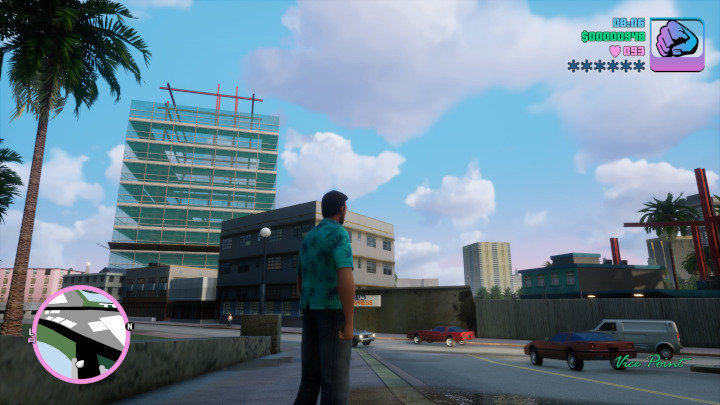
By and large, though, I do feel that the overall package makes each far more playable and palatable, at least on beefier consoles, than the original versions. Yes, there are unfortunately more casualties in the soundtrack department than I think anyone wanted to see, which makes me hesitant to call these the definitive versions of these games, but each game is otherwise intact. More importantly, these games are presented in a way that should make them easier to digest for new and old players alike.
The mild quality-of-life improvements — better weapon aiming and lock-on, with the GTA V-style weapon wheels — are a decent improvement over the clumsy aiming options of yore. And the overall visual polish really brings some fresh life into these aging behemoths. I also feel like most of the gripes about this collection can be addressed in future patches — that is, if Rockstar and Grove Street Games are willing to put in the work.
It is a shame though that the older digital versions of these games were removed from digital storefronts to make way for these definitive versions. I personally don’t see the existence of these games clashing with the original ones, unless Rockstar was hoping to erase any chance of comparison between the older versions and their remastered replacements. But if that truly was the intention, removing those older games only a week or two before the launch of this collection probably did more harm than good — it definitely didn’t offer enough time for anyone to forget the condition of those older versions. But really, that has very little to do with how these remastered games perform.
I also did not spend any time with the Nintendo Switch version, which I hear is surprisingly rough. That strikes me as odd, given that these are mostly just gussied-up old games and shouldn’t be all that taxing in the performance department.

When I went into these, I didn’t imagine playing much of GTA III or Vice City other than to check out the new shine and relive some past glories. But now that I’ve dipped my toes in, I could see actually completing all three and maybe even shooting for 100% completion — something I didn’t dare to attempt back in the day. It’s also interesting to play all three games in such close proximity to one another, as it makes the overlapping elements really stand out, whether that is through use of reoccurring characters, references to missions from previous titles, or even songs that were new in the ’80s setting of Vice City appearing on the oldies channel in GTA III and San Andreas (which take place in the aughts and 1990s respectively).
All of that being said, whether you are new to these classic games or are experiencing them for the first time, I feel like there is enough on offer to justify the buy-in. Of course, waiting for a sale might not be a bad idea, since there really isn’t anything here that you absolutely need to experience ASAP.
It seems like everything old is new again these days, for better or for worse, but in the case of Grand Theft Auto: The Trilogy – The Definitive Edition, I think the collection is well worth a trip down old Memory Lane.
